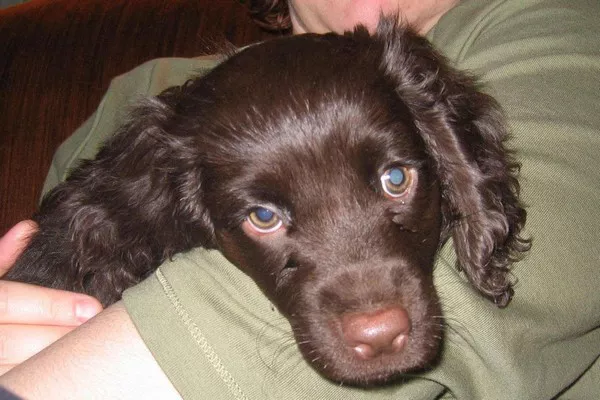Corn snakes (Pantherophis guttatus) are a popular species of non-venomous snake native to the southeastern United States. Known for their calm demeanor, beautiful coloration, and manageable size, corn snakes are often kept as pets. As with all reptiles, understanding their natural behaviors, such as whether they burrow, is essential for providing them with the best possible care.
In this article, we will explore the natural habitat of corn snakes, their behaviors related to burrowing, and how this information can inform their care in captivity. We will break down the science behind their burrowing tendencies, how their biology influences this behavior, and the best ways to create a suitable environment for them in a home setting.
What Is Burrowing?
Burrowing is the behavior of digging into the ground or substrate to create a shelter or hide. This behavior is common in many animal species, especially those in the wild, where hiding from predators and maintaining a stable environment is crucial. Burrowing can also serve as a way to regulate temperature, humidity, and provide a safe retreat from the outside world.
Many reptiles, including snakes, may burrow as a part of their daily activities. For some, burrowing is essential to their survival, while for others, it is merely an occasional behavior. Understanding whether corn snakes burrow can help us replicate their natural environment and ensure they remain healthy and stress-free in captivity.
The Corn Snake’s Natural Habitat
Corn snakes are native to the southeastern United States, where they inhabit a variety of environments, including grasslands, forests, and agricultural areas. These snakes are often found in areas with abundant ground cover, such as under logs, rocks, or other debris. While they prefer areas that provide ample hiding spots, they do not necessarily dig their own burrows like some other species.
In the wild, corn snakes are opportunistic hunters and thrive in environments where they can hide from predators while also having easy access to food sources such as small mammals, birds, and reptiles. The burrowing behavior they display in nature is less about digging tunnels and more about seeking out natural shelters where they can remain undisturbed.
Do Corn Snakes Burrow in the Wild?
Corn snakes do not typically burrow in the sense that many other animals like rodents or some reptiles do. However, they are known to seek shelter in crevices, burrows made by other animals, or under natural objects like logs and rocks. These locations offer them protection from predators, as well as a stable environment where they can maintain the right temperature and humidity levels.
Corn snakes are ground dwellers and prefer to remain close to the ground for most of their lives. While they will often use burrows created by other animals or natural shelters, they are not prolific diggers themselves. They may also spend time in abandoned rodent burrows or under piles of leaves or plant material. This behavior is more about seeking out places that offer safety and stability rather than digging out tunnels or creating elaborate burrows.
Do Corn Snakes Burrow in Captivity?
In captivity, corn snakes often exhibit some of the same behaviors they would in the wild, but their need to burrow may be less pronounced. Pet corn snakes do not typically need to burrow for safety from predators, as they are in a controlled environment. However, they may burrow occasionally for comfort, temperature regulation, or simply because they feel more secure in a hidden, enclosed space.
Captive corn snakes are often provided with various hiding spots and burrow-like structures, such as caves, tunnels, or areas with deep bedding. These features mimic their natural environment and provide a sense of security for the snake. A lack of appropriate hiding spaces can lead to stress, which may negatively affect the snake’s health and behavior. While corn snakes may not dig or burrow in the same way as other species, they do enjoy having a place to retreat and feel safe.
Why Do Corn Snakes Dig or Burrow?
Even though corn snakes are not known to burrow extensively, there are several reasons why they might engage in this behavior. Understanding these motivations can help pet owners ensure their corn snakes are provided with the right living conditions.
1. Safety and Security
In the wild, corn snakes are preyed upon by a variety of animals, including birds of prey, larger mammals, and other predators. As a result, they naturally seek places where they can hide and feel secure. While a pet corn snake may not face the same dangers, the instinct to seek shelter remains strong. A burrow or a hide provides a sense of security and helps to reduce stress.
2. Temperature Regulation
Like many reptiles, corn snakes are ectothermic, meaning they rely on external temperatures to regulate their body heat. In the wild, they may burrow into the ground or seek shelter in places where the temperature is more stable. In captivity, they may burrow into bedding material if it provides a more comfortable or stable temperature. For instance, if the top layer of the bedding is too hot or too cold, the snake may burrow to find a more favorable environment.
3. Humidity Control
Humidity is another critical factor for the health of corn snakes. In the wild, they are often found in areas with moderate to high humidity levels. If the air in their enclosure is too dry, they may burrow into the substrate to find a more humid area, or they may seek shelter in a moist hide. This behavior helps them maintain proper hydration and skin health.
4. Comfort and Rest
Burrowing can also be a sign of comfort for a corn snake. Much like other animals, corn snakes may burrow simply to create a comfortable, secluded area where they can rest undisturbed. This is especially true if the snake feels exposed in its environment. Offering a variety of hides and burrow-like spaces in the enclosure can help reduce stress and provide a more comfortable living situation.
How to Create a Suitable Environment for Corn Snakes
While corn snakes do not burrow in the same way as some other species, creating an environment that allows them to mimic natural behaviors is essential for their well-being. Below are some key factors to consider when setting up an enclosure that accommodates the corn snake’s needs.
1. Substrate
The substrate is the material that lines the bottom of the enclosure, and it plays a significant role in the comfort and health of your snake. While corn snakes do not need deep substrate for burrowing, it is important to provide a substrate that is suitable for hiding and maintaining the right humidity. Popular substrates for corn snakes include aspen shavings, cypress mulch, and coconut husk. These materials allow for some digging behavior and provide an ideal texture for creating hiding spots.
Avoid using sand or gravel, as these materials can be harsh on a snake’s skin and may lead to health issues. Additionally, these substrates do not hold humidity well and can cause dryness in the enclosure, which is not ideal for corn snakes.
2. Hides and Shelters
Providing multiple hiding spots is crucial to your corn snake’s happiness and stress reduction. As previously mentioned, corn snakes are inclined to seek shelter, and having a variety of hides available in different areas of the enclosure helps them feel secure. Hides can be created using ceramic or plastic caves, cork bark, or other natural materials that provide a secluded space where the snake can retreat when needed.
Placing hides in different temperature zones of the enclosure (warm and cool sides) will allow the snake to regulate its body temperature by moving between these areas.
3. Temperature and Humidity
Corn snakes require a specific temperature gradient within their enclosure, with a warm side and a cooler side, to regulate their body temperature. The warm side should be between 80-85°F (27-29°C), while the cool side should be around 70-75°F (21-24°C). A heat mat, basking lamp, or ceramic heat emitter can help maintain these temperatures.
Humidity levels should be kept between 40-60%. Higher humidity levels are often achieved by providing a water dish large enough for soaking, misting the enclosure, or using a humidifier. Keep in mind that a humid hide, such as a box with damp moss, can give your corn snake a place to retreat when they need a more humid environment.
4. Space for Exploration
Corn snakes are active animals and enjoy exploring their environment. While they do not burrow extensively, they benefit from having plenty of space to move around. Providing an appropriately sized enclosure is crucial for their mental and physical health. A 40-gallon tank or larger is typically recommended for an adult corn snake.
5. Natural Elements
To simulate their natural habitat, include elements like branches, rocks, and logs for climbing, as well as plants (either real or artificial) for additional cover. These elements will give your corn snake opportunities to explore and seek shelter, mimicking the conditions they would experience in the wild.
Conclusion
While corn snakes do not burrow in the traditional sense, they do exhibit burrowing behaviors in the wild and captivity. They seek shelter and security in hidden spaces, such as burrows created by other animals, logs, and other natural structures. In captivity, they may burrow occasionally to regulate temperature and humidity or simply to feel secure.
By understanding the natural tendencies of corn snakes and providing them with a suitable environment that includes hiding spots, appropriate substrate, and correct humidity and temperature levels, you can ensure that your pet remains healthy, comfortable, and stress-free. While burrowing may not be essential to their survival in captivity, providing spaces that allow for natural behaviors is key to their overall well-being.
Related Topics:





















